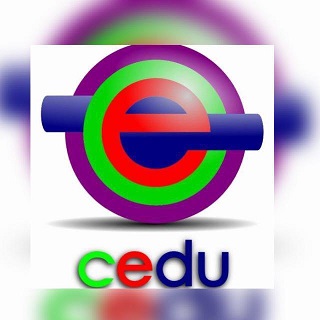MULTILITERACIES AND PORTUGUESE LANGUAGE TEACHING: THE USE OF THE GENDER REMIX FOR THE DEVELOPMENT OF CRITICITY IN STUDENTS OF FUNDAMENTAL EDUCATION
Keywords:
Multiliteracity, Genre Remix, Teaching, TechnologiesAbstract
This article aims to study how the pedagogy of multiliteracies and the teaching of the remix genre in Portuguese language classes can contribute to the development of criticality of elementary school students. We think that the use of technologies and new media in the classroom can promote students' interest in learning from these more contemporary genres that are closer to them. In order to carry out this study and carry out the analyzes we propose, we rely on the theory of multiliteracy (COPE E KALANTZIS, 2000; ROJO and MOURA, 2019; COPE, KALANTZIS and PINHEIRO, 2020) and on the definitions of the remix genre (BUZATO et al, 2013 ), understanding its importance in language teaching, making the connections between these theories and the guidelines of the BNCC (2017, 2018). Using the action research methodology (FONSECA, 2002), fifteen classes on the remix genre were taught in an elementary school class and information was compiled for analysis. We found that there is a need to rethink teacher training and a difficulty on the part of the school to include new technologies in the classroom. Analyzing the results, we realized that the production of the remix genre connected students with contemporary social issues and helped them to develop their criticality.
Downloads
References
BRASIL. Ministério da Educação. Base Nacional Comum Curricular. Brasília, DF, 2018. Disponível em: http://basenacionalcomum.mec.gov.br/images/BNCC_EI_EF_110518_versaofinal_site.pdf. Acesso em 01/10/18
______. Ministério da Educação. Base Nacional Comum Curricular. Brasília, DF, 2017. Disponível em: http://basenacionalcomum.mec.gov.br/images/BNCC_EI_EF_110518_versaofinal_site.pdf . Acesso em 01/10/18.
BRESSAN, Renato Teixeira. Dilemas da rede: Web 2.0, conceitos, tecnologias e modificações. Anagrama, v. 1, n. 2, p. 1-13, 2007.
BUZATO, Marcelo El Khouri et al. Remix, mashup, paródia e companhia: por uma taxonomia multidimensional da transtextualidade na cultura digital. In: Revista Brasileira de Linguística Aplicada, Belo Horizonte, v. 13, p.1191-1221, 2013. Disponível em: https://www.redalyc.org/articulo.oa?id=339829654011 . Acesso em: 29 nov. 2019.
COPE, B. KALANTZIS, M. (Eds.) Multiliteracies: Literacy Learning and the Design of Social Futures. Routlege: London, 2000.
COPE, B. KALANTZIS, M. PINHEIRO, P. Letramentos. Campinas, SP: Editora da Unicamp, 2020.
DOLZ, J.; NOVERRAZ, M.; SCHNEUWLY, B. Sequências didáticas para o oral e a escrita: apresentação de um procedimento. In: SCHNEUWLY, B; DOLZ, J. Gêneros Orais e escritos na escola. Trad. e org. ROJO, R.; CORDEIRO, G. S. São Paulo: Mercado das Letras, 2004, p. 95-128.
DUBOC, Ana Paula Martinez. Avaliação da aprendizagem de línguas e os multiletramentos. In: Estudos em Avaliação Educacional, [s.l.], v. 26, n. 63, p.664-687, 29 dez. 2015. Fundação Carlos Chagas. http://dx.doi.org/10.18222/eae.v26i63.3628. Disponível em: http://publicacoes.fcc.org.br/ojs/index.php/eae/article/view/3628 . Acesso em: 01 dez. 2019.
FONSECA, J. J. S. Metodologia da pesquisa científica. Fortaleza: UEC, 2002. Apostila.
FRANCISCO, Cicero Nestor Pinheiro. A difusão de novas competências pela BNCC: os multiletramentos e o ensino da linguagem na era das novas tecnologias. In: XVI Congresso Internacional de Tecnologia na Educação, 16, 2018, Recife. Anais. Pernambuco: 2018. p. 1 – 14. Disponível em: http://www.pe.senac.br/congresso/anais/2018/senac/index.html. Acesso em: 1 dez. 2019.
GOMES, Rosivaldo et al. Novos letramentos na cultura digital: o remix Vem pra rua - o gigante acordou como um híbrido. Pracs: Revista Eletrônica de Humanidades do Curso de Ciências Sociais da Unifap, Macapá, v. 8, p.93-122, 2015. Semestral. Disponível em: https://periodicos.unifap.br/index.php/pracs/article/view/1628 . Acesso em: 29 nov. 2019
KLEIMAN, A. B. (org). Os significados do letramento: uma nova perspectiva sobre a prática social escrita. Campinas: Mercado das Letras, 1995.
LAMB, B. Dr. Mashup or, Why Educators Should Learn to Stop Worrying and Love the Remix. Educause Review, v. 42, p. 12-25, 2007.
NAVAS, E. Regressive and Reflexive Mashups in Sampling Culture. In: SONVILLA-WEISS, S. (Ed.). Mashup Cultures. Wien; New York: Springer, 2010. p. 157-177.
ROJO, Roxane (ed.). Para se aprofundar: Roxane Rojo: “Finalmente, entramos no século 21 no ensino de linguagem”. In: NOVA ESCOLA. BNCC na prática: Tudo que você precisa saber sobre Língua Portuguesa. [S.l.]. Disponível em: https://novaescola.org.br/bncc/conteudo/29/roxane-rojo-ha-muitos-paises-recuando-no-tempo-com-seus-curriculos-enquanto-aqui-estamos-evoluindo-rapidamente Acesso em: 29 nov. 2019.
____________. Apresentação. In: ROJO, Roxane (Org.). Escol@a Conectad@: os multiletramentos e as TICs. São Paulo: Parábola, 2013.
____________. Gêneros discursivos do círculo de Bakhtin e multiletramentos. In: ROJO, Roxane (Org.). Escol@a Conectad@: os multiletramentos e as TICs. São Paulo: Parábola, 2013. Cap. 1. p. 13-36.
ROJO, Roxane Helena R.; MOURA, Eduardo (Org.). Multiletramentos na escola. São Paulo: Parábola Editorial, 2012.
________________. Letramentos, mídias, linguagens. São Paulo: Parábola Editorial, 2019.
SIBILIA, Paula. Redes ou paredes: a escola em tempos de dispersão. Rio de Janeiro: Contraponto, 2012. Tradução de: Vera Ribeiro.
SILVA, Themis Rondão Barbosa da Costa. Pedagogia dos multiletramentos: principais proposições metodológicas e pesquisas no âmbito nacional. Letras, [S.l.], n. 52, p. 11, jun. 2016. ISSN 2176-1485. Disponível em: <https://periodicos.ufsm.br/letras/article/view/25319>. Acesso em: 01 dez. 2019.
THIOLLENT, M. Metodologia da pesquisa-ação. São Paulo: Cortez; 1986.
Published
How to Cite
Issue
Section
License
Copyright
The submission of originals to Cenas Educacionais (Educational Scenes - CEDU) implies the transfer, by the authors, of the publication rights. The copyright for the manuscripts published in this journal is the author(s), with CEDU rights over the first publication. Authors(s) may only use the same results in other publications by explicitly indicating CEDU as the means of the original publication.
Creative Commons License
Except where otherwise specified, the terms of a Creative Commons Attribution-ShareAlike 4.0 International License license apply to the material published in this journal, which allows unrestricted use, distribution and reproduction in any medium provided the original publication is correctly cited.






 This work is licensed with a License
This work is licensed with a License 